by Golan Levin @ 11:26 pm 24 April 2011
Professor Golan Levin and teaching assistant Dan Wilcox are proud to present a compilation of our students’ final projects from our Spring 2011 course, Special Topics in INTERACTIVE ART and COMPUTATIONAL DESIGN!
Thirty students, spanning eight departments, created personal research investigations into arts-engineering, freestyle computing, and new media practice. These projects explored experimental interfaces, information visualization, games, real-time audiovisuals, computationally generated forms, interactive robotics, 3D scanning and depth imaging, crowd-sourcing, physical computing, and many other topics. (For Kinect-specific projects, please this special index to the 22 Kinect-based projects developed in the course.)
Featuring projects by: Alex Wolfe, Asa Foster III, Ben Gotow, Caitlin Rose Boyle, Charles Doomany, Chong Han Chua, Dane Pieri, Emily Schwartzman, Eric Brockmeyer, Honray Lin, Huaishu Peng, James Mulholland, John Horstman, Jordan Parsons, Le Wei, Madeline Gannon, Marynel Vázquez, Mauricio Giraldo Arteaga, Max Hawkins, Meg Richards, Maya Irvine, Mark Shuster, Nisha Kurani, Paul Miller, Riley Harmon, Samia Ahmed, Shawn Sims, Susan Lin, Timothy M. Sherman, and Ward Penney.

Alex WOLFE, Reaction Diffusion Textiles
Alex generates and fabricates machine-knit textile patterns based on reaction diffusion algorithms. |

Caitlin BOYLE + Asa FOSTER III,
We Be Monsters
The world’s first two-person Kinect puppet, this project allows a pair of users to control the BEHEMOTH, a non-humanoid quadruped. |
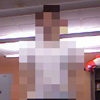
Ben GOTOW, Kinect Fun House Mirror
Using real-time body segmentation, Ben’s project performs “fun house” transformations on a single person amongst a crowd.
|

Charles DOOMANY, Nest: Generative Tables
Combining generative algorithms and physics simulations, Charles presents a tool for generating furniture with unexpected variations. |
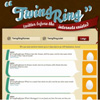
Chong Han CHUA, TwingRing
Chong-Han uses speech synthesis to create hilarious sonificiations of Twitter conversations. |

Dane PIERI, Build-A-Site
Dane’s tool generates web layouts based on user-adjusted parameters. After a few choices, the user is given a CSS file. |
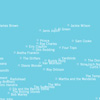
Emily SCHWARTZMAN, Lyrical Similarity
Emily’s visualization explores the patterns and similarities of various popular musicians based on their song lyrics. |
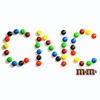
Eric BROCKMEYER, CNC M&M’s
Eric’s project, a CNC pick-and-place for M&M’s, explores the possibilities of integrating computational design, digital fabrication, and food. |
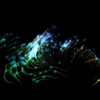
Honray LIN, Flocking
Ray creates a group of flocking blobs. |
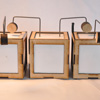
Huaishu PENG, Algo Rhythm
A physical computing music machine with social behaviors. It consists of a set of drumboxes with can record user input and replay it in different ways. |

James MULHOLLAND, geneHackman
A radial visualization for genealogical data. Individuals, represented as nodes, are placed a distance from the center relative to the year they were born, with 2000 at the center moving backward in time as they move outward. |

John HORSTMAN, Twilight Conductor
An interactive video installation where the audience can use arm gestures to “conduct” a sunset, changing the color of the atmosphere and flinging stars up into the evening sky. |
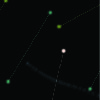
Le WEI, süss
An interactive sound generator using touch interactions to create strings that can be “strummed”. |

Madeline GANNON, madMeshMaker
An intuitive design tool for first-year architecture students, providing ready output to various fabrication machines. |
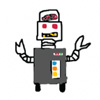
Marynel VÁZQUEZ, Future Robots
A crowd-sourced book that compiles predictions and emotional responses about the role of robots in the future. |
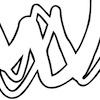
Mauricio ARTEAGA, Body Type
Using a Kinect, Body Type allows anyone to create a highly expressive and personal typeface using only their body and hand gestures. |

Max HAWKINS, Transit Visualization & The Trouble With Large Datasets
A visualization of the transit data for Pittsburgh buses. |

Meg RICHARDS, Fly Catching
A game using a Kinect and trampoline in which the player controls a frog that can hop and catch flies. |

Maya IRVINE, Icon
Generative personal icons that use data from Last.fm to describe an individuals music taste. |

Mark SHUSTER, C.QNCR
A YouTube mashup-sequencer that allows participants to creatively edit videos into unique songs, speeches and montages. |

Nisha KURANI, TracEMAIL
Nisha visualizes her inbox with this tool that represents the relationships between time, people, and emails. |
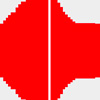
Paul MILLER, Fish
Telephone voice messages, left by the system’s visitors, form the basis for generatively shaped and animated virtual fish. |
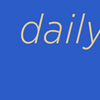
Samia AHMED, Daily Life
A generative book, comprising images generated from diary entries. |
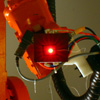
Shawn SIMS, Robotic Mimicry
An eight-foot industrial robot mimics, interprets and augments the user’s gestures. |
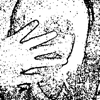
Susan LIN, SketchCam
A webcam-based interactive mirror in which viewers see themselves as a moving sketch. |
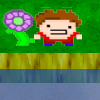
Timothy SHERMAN, Never Turn Your Back On Mother Earth
A table heaped with Play-Dough is rendered onscreen as a landscape, explored by interactive characters. |

Ward PENNY, Kinect Portal
A new interface, consisting of a hand-held projection screen, that allows users to interactively browse slices of an invisible world. |
Comments Off on Final Projects






















